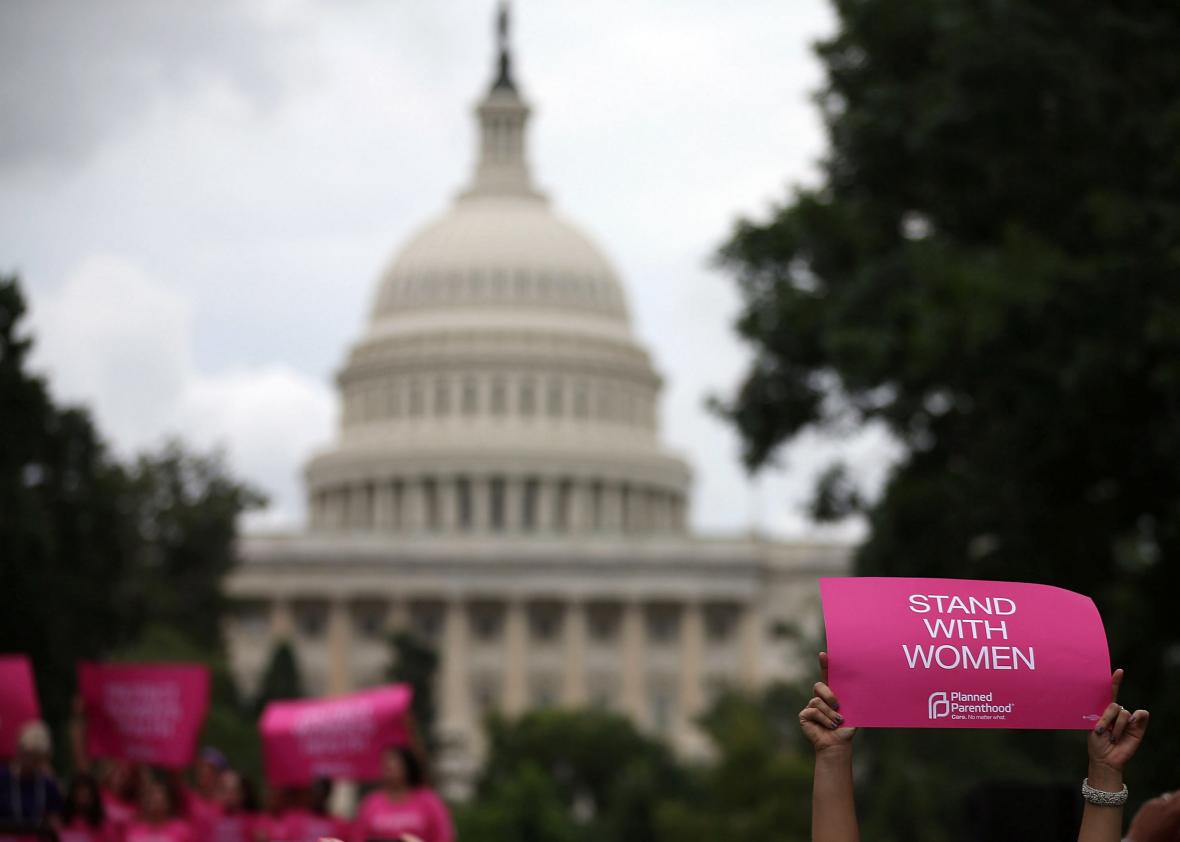As the Supreme Court mulls the constitutionality of the Texas law that could shutter all but a handful of abortion clinics, activists are harnessing the power of personal narrative to tip the scales. More than a hundred attorneys told the stories of their own abortions in an amicus brief earlier this month, giving faces and names to some of the millions of U.S. women who’ve exercised their right to access the procedure. Last year’s #ShoutYourAbortion Twitter blast invited women to share the circumstances—some banal, some dire, some optimistic—of their abortions.
Today, about 100 more women are telling their abortion stories in a live-streamed broadcast hosted by Advocates for Youth’s 1 in 3 Campaign from noon to 6 p.m. Wendy Davis, who’s spoken at length about her own abortions, will join Planned Parenthood president Cecile Richards, NARAL Pro-Choice America president Ilyse Hogue, and members of Congress in what organizers are calling a speak-out, drawing on the long history of women speaking about reproductive rights on the steps of the Supreme Court.
Reproductive justice advocates have called Whole Woman’s Health v. Cole the most significant abortion-rights case in two decades, one that could redefine the future of abortion access. For many activists, and for many reasons, this moment feels like a crossroads for reproductive rights in the U.S. Of the 1,074 abortion restrictions enacted in the U.S. in the 43 years since Roe v. Wade, 27 percent were passed in the last five years. The past year has been a particularly harsh one for abortion providers, who have seen a spike in harassment and violence since the Center for Medical Progress made its misguided allegations of improper fetal tissue donation practices at Planned Parenthood last summer.
Whole Woman’s Health founder and CEO Amy Hagstrom Miller considers personal stories a critical weapon against the “black-and-white dualism” and abstract arguments that color public discussion of abortion. Without including the diverse lived experiences of abortion-seeking women and the barriers they face, the case for abortion rights loses some of its urgency. “The new generation [of activists] are able to talk about abortion and unplanned pregnancy with more complexity, which welcomes people’s stories…instead of reducing them to political statements,” Hagstrom Miller told Slate.
Placing real people at the center of a constitutional argument was essential to last year’s fight for equal marriage, which culminated in a Supreme Court victory. The sympathetic couples who spoke out in support of Obergefell v. Hodges were held up as evidence that the tide of public opinion in the U.S. had changed in favor of equal marriage, and that a vote against it would place the court on the wrong side of history. The 1 in 3 Campaign is pegging its abortion speak-out as a “people’s brief” to the Supreme Court, just like the Human Rights Campaign did for the 200,000-signature petition it delivered to the court in 2015. Personal abortion stories have affected political decisions in the past; Tuesday’s livestream will feature testimony from Rep. Tim Ryan (D-OH), who reversed his stance on abortion after listening to women’s experiences with the procedure.
They’re also a powerful way to combat the stigma and shame that prevent women from advocating for their own reproductive rights in the first place. “What we’ve seen is that women really want to share their stories,” Advocates for Youth president Deb Hauser told Slate. “They really want to take the burden off their shoulders.” Hagstrom Miller calls the protests supporting Wendy Davis’ 2013 Texas filibuster a “watershed moment” for personal narratives around abortion. More than 700 people signed up to tell their abortion stories, turning one of the worst moments of Hagstrom Miller’s career—a devastating blow to Texas abortion clinics—into a win for the reproductive rights movement’s long-term goals.
The first hour of the livestream featured stories from a woman named Gina, who told her story in Spanish through tears, and #ShoutYourAbortion founder Amelia Bonow, who declared that “any women who does not have control of her fertility and is forced to procreate has lost her right to life.” OB/GYN Jamila Perritt testified to the uneven abortion access women experience across the U.S. and the difficult decisions poor women often face, like choosing whether to spend money on birth control or schoolbooks for their kids. Over Skype, Nancy Starner of Preterm, Ohio’s largest abortion clinic, said her 1996 abortion was “never a question to be decided.” “I had an abortion because I was pregnant, and I didn’t want to be,” she said. After the procedure, “I felt like normal, and so deeply relieved.” For a campaign based on hundreds of personal stories, “normal” is the operative word.
